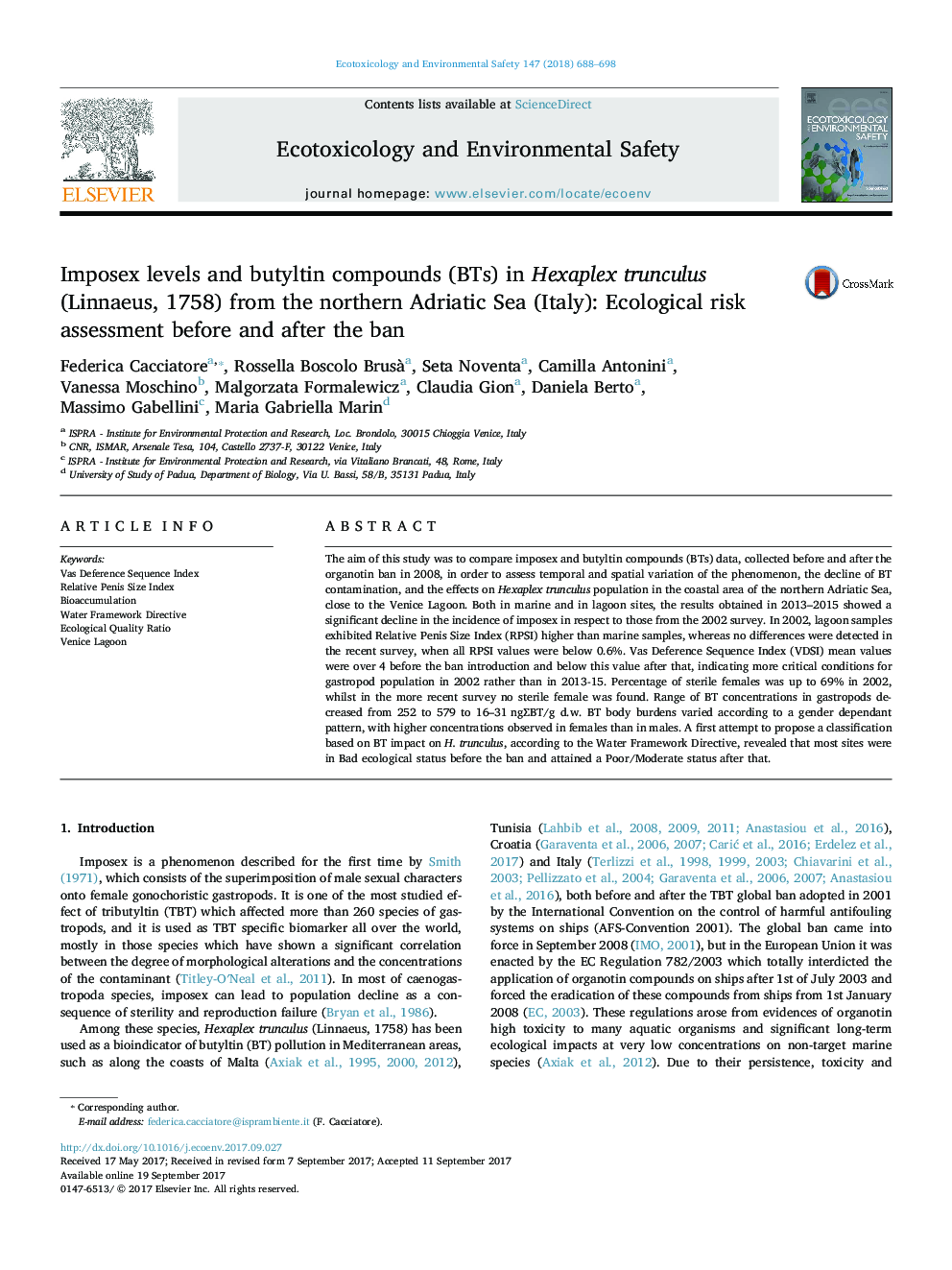| کد مقاله | کد نشریه | سال انتشار | مقاله انگلیسی | نسخه تمام متن |
|---|---|---|---|---|
| 5747828 | 1618917 | 2018 | 11 صفحه PDF | دانلود رایگان |

- Reduction of imposex and BT levels occurred in H. trunculus after the EU ban.
- BT body burdens varied according to gender.
- RPSI showed seasonal and gastropod size-dependant differences.
- Different modes of imposex development were observed before and after the ban.
- VDSI mean values indicated gastropod population as still near threatened.
The aim of this study was to compare imposex and butyltin compounds (BTs) data, collected before and after the organotin ban in 2008, in order to assess temporal and spatial variation of the phenomenon, the decline of BT contamination, and the effects on Hexaplex trunculus population in the coastal area of the northern Adriatic Sea, close to the Venice Lagoon. Both in marine and in lagoon sites, the results obtained in 2013-2015 showed a significant decline in the incidence of imposex in respect to those from the 2002 survey. In 2002, lagoon samples exhibited Relative Penis Size Index (RPSI) higher than marine samples, whereas no differences were detected in the recent survey, when all RPSI values were below 0.6%. Vas Deference Sequence Index (VDSI) mean values were over 4 before the ban introduction and below this value after that, indicating more critical conditions for gastropod population in 2002 rather than in 2013-15. Percentage of sterile females was up to 69% in 2002, whilst in the more recent survey no sterile female was found. Range of BT concentrations in gastropods decreased from 252 to 579 to 16-31Â ngâBT/g d.w. BT body burdens varied according to a gender dependant pattern, with higher concentrations observed in females than in males. A first attempt to propose a classification based on BT impact on H. trunculus, according to the Water Framework Directive, revealed that most sites were in Bad ecological status before the ban and attained a Poor/Moderate status after that.
Journal: Ecotoxicology and Environmental Safety - Volume 147, January 2018, Pages 688-698